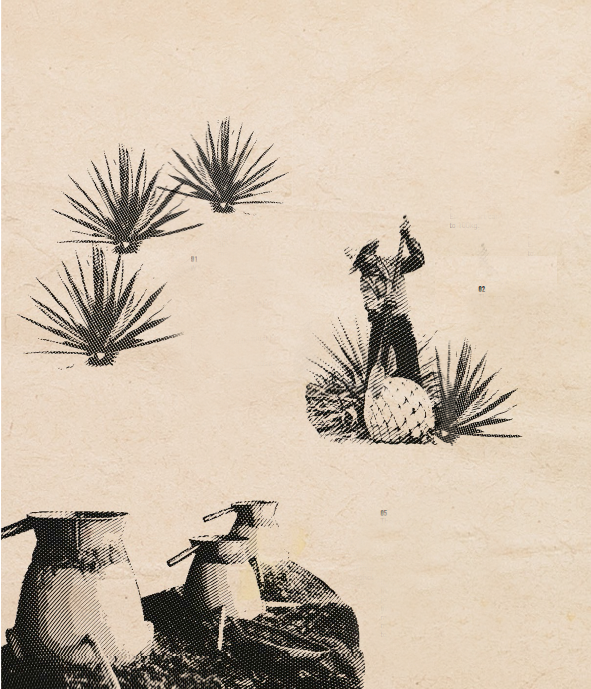Making a spirit has never been more artisanal.


Making a spirit has never been more artisanal.

THE LOVE BUG
No thanks to the shoddy factchecking behind today’s popular movies and TV shows, many believe tequila is the spirit that welcomes creepy crawlies down its neck. The truth is that this slightly stomachturning tradition belongs to mezcal. The larva found at the bottom of some bottles are usually a red variety known as gusano rojo, though (less tasty) white ones known as chinicuil or “maguey worm” have also been used. The reason for them being there, however, is much more varied and ranges from clever marketing, to the worms being an aphrodisiac, rendering better flavour and offering quicker inebriation. Another origin story involves proving the purity of the alcohol, as a perfectly preserved caterpillar must indicate high alcohol content in the spirit. From a chemical standpoint, mezcals with the little grub contain more unsaturated compounds and alcohols, one of which has the smell of freshly cut grass to humans and can act as a real aphrodisiac to mammals and insects. Whatever the case may be, it certainly adds to the colourful experience as a whole.

01: While tequila must be made from Blue Agave, mezcal can utilise over 30 varieties of agave, or maguey, and the most common one in the Oaxaca area is the Agave Espadin. This cactus-like plant flowers only once in its lifetime, and is sometimes known as the “century plant” because of its long lifespan.
02: The agave plant is characterised by long, blade-shaped leaves and these are cut down during the harvest by the jimador, who uses a coa – a stick with a round, flat blade at the end that resembles a flat shovel. Once the leaves have been sheared, the remaining heart, which is called the pina for its resemblance to a pineapple, is collected. Each heart can weigh up to 100kg.
05: The crushed agave is transferred to wooden barrels which are topped up with water and left to ferment for several days, after which the mash is distilled. The fibres are removed from the still and the alcohol is distilled a second time. After blending to maintain consistency, the mezcal is bottled or left to age in oak barrels.

03: This is where mezcal production starts to differ from tequila. A fire is started in the base of an earthen pit and covered with river stones. Once the rocks are red and hot, the pinas – which have been halved or quartered – are placed inside, covered with agave leaves, straw mats and earth, then left to roast for four days. This process is what gives the mezcal its signature smoky flavour.
04: Once the pinas have cooked through, they are unearthed and moved to a tahona, which is a traditional grinding mill with a stone wheel pulled by a horse or mule. All this happens on a palenque or farm, and is overseen by a master mezcalero.























